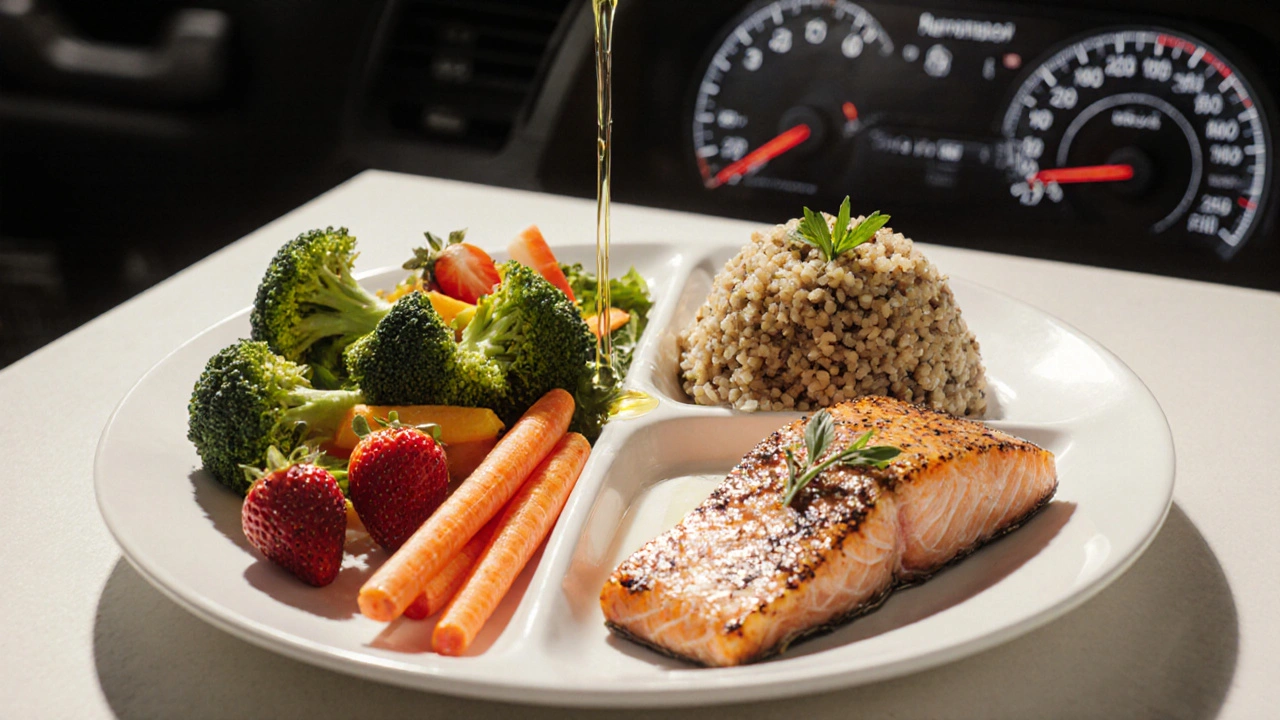Balanced Meals for Dogs: What Really Belongs in the Bowl
You want your dog to have energy, a shiny coat, and fewer vet visits. What you feed them matters more than trendy labels. A truly balanced meal gives the right mix of protein, healthy fats, carbs, fiber, vitamins, and minerals. Below I’ll walk you through what those pieces look like, how to portion, and simple, real-world meal ideas you can use today.
What a balanced dog meal looks like
Think of a dog meal as starting with quality protein. Good options: cooked chicken, turkey, lean beef, or fish like salmon. Protein supports muscles and repair. Add healthy fats—fish oil or small amounts of olive oil—for coat and brain health; omega-3s are especially helpful for skin and joints. Include digestible carbs and fiber: cooked sweet potato, pumpkin, or brown rice in small amounts. Veggies like green beans, carrots, and peas add fiber and vitamins. Finish with a source of calcium (plain yogurt, kefir, or crushed eggshells if you’re making homemade meals) and a basic multivitamin made for dogs if your vet recommends it.
Portion size depends on age, weight, activity level, and body condition. As a rule, active adult dogs often need about 2–3% of their body weight per day in homemade food; less active dogs need less. Weigh your dog, watch their ribs and waistline, and adjust—if you’re unsure, ask your vet for a tailored plan.
Practical tips and sample meals you can trust
Swap one commercial meal for a homemade option gradually over 7–10 days to avoid upset stomach. Don’t rely on recipes from social media—use vet-approved guides or consult a canine nutritionist. Avoid toxic foods: no onions, garlic, grapes, raisins, chocolate, xylitol, or macadamia nuts. Keep salt and added seasonings out of the bowl.
Simple sample meals:
- Adult maintenance: 60% cooked lean protein (chicken), 20% cooked sweet potato, 15% mixed steamed veggies, 5% plain yogurt.
- Joint support: 55% salmon (or fish + fish oil), 25% brown rice, 15% pumpkin, 5% green beans.
- Weight control: 50% turkey breast, 30% green beans and carrots, 15% cooked quinoa, 5% plain cottage cheese.
Supplements can fill gaps: fish oil for omega-3s, joint supplements (glucosamine/chondroitin) for older dogs, and a balanced canine multivitamin when recommended. Always tell your vet before starting supplements—dosage and safety matter.
Final practical note: keep a simple feeding log for two weeks—track food, portions, stool quality, energy, and coat condition. That small habit helps you see what’s working and gives your vet clear info if you need adjustments. A balanced bowl doesn’t have to be complicated; it just has to cover the basics and match your dog’s needs.

Decoding the Healthy Diet: Answers to Your Top Nutrition Questions
A clear guide that explains what a healthy diet really means, breaks down nutrients, busts myths, and offers practical steps to build balanced meals.

Healthy Diet Secrets: How to Stick to Your Nutrition Goals
Unveil practical secrets for maintaining a healthy diet, managing weight, and making better food choices with tips that fit into real life, not just theory.

Creole Bamboo Massage: A Fresh Path to Body Healing
Mar, 21 2025

Amma Massage: A Journey to Inner Peace
Oct, 24 2023


